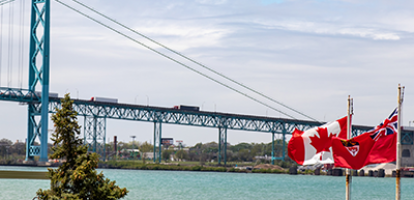From: Benjamin Dachis
To: Toronto Mayoral Candidates
CC: Canadian Municipalities and Provinces
Date: June 23, 2023
Re: Three measures to reduce house prices in Toronto and Across Canada
Despite recent softening, the cost of housing in Canada has increased dramatically in recent years. In some cities, barriers to getting new homes built are a major reason and drive a wedge between what it costs to build and the market price.
This problem is particularly acute in Vancouver and Toronto, which picks a new mayor on Monday and where housing affordability has been a major talking point in the 102-candidate election to replace John Tory.
On average between 2011 and 2021, a single detached home in the Vancouver area cost homebuyers $2 million. But the actual construction cost was only about $700,000. The $1.3-million difference reflected high costs for the right to build on the limited land governments allowed housing to be built on. Homes in the Toronto area now cost homebuyers $350,000 more than they cost to build. In the Montreal area, however, the difference between cost and market price is negligible.
Why the gap?
High profits for homebuilders are not the explanation: If builders were making 50 percent and more on every house they built and sold, other builders would be rushing into the market. The big gap between building costs and buying prices shows the dysfunction in some Canadian housing markets. Factors include: high upfront development charges, regulatory restrictions on land use and a lack of available transportation.
In theory, land purchase costs should only be about a quarter of total home costs. Anything more reflects barriers to accessing land. In areas that don’t have much land, builders put homes in more technically challenging – and costly – places and in higher-density configurations.
All sorts of rules discourage new builds, which benefits current owners wishing to sell to people willing to pay the high prices. Those who can’t afford those supply-constrained high prices find themselves stuck in basements or substandard homes.
Here are three ways to try to increase supply and reduce prices.
First, provinces should set mandated minimum targets for municipal housing construction. They need to act because local governments typically approve fewer homes than would an unimpeded market. Ontario has started down this path with municipal housing pledges. But who will enforce them?
Last week, Ontario expanded “strong mayor” powers to large cities that have agreed to meet provincial housing pledges. Toronto’s new mayor will already hold these powers. Mayors with these powers should enforce council-approved housing plans. Ontario should delegate assessment of whether plans can achieve their goals to neutral adjudicative bodies, which should have the power to compel plan revisions if targets are likely to be missed.
Second, governments need to reform upfront development charges on new housing. In Montreal, there are no such charges. In some places in Toronto, they add more than $100,000 to new home costs. Water and wastewater are the largest components of development charges. People who benefit from services certainly should pay for them – but over the life of the asset, not all at once up front. That’s not an efficient way to pay for infrastructure. Cities should instead pay for these services with per-use fees financed by debt or equity investment. Regulators could define how capital costs translate to annual fees. Fees could be higher in new areas to reflect the capital cost required for growth. But other capital costs would be shared by all who benefit over the life of the asset. That’s fair and efficient.
Where user fees can’t be charged over time, we should reduce existing fixed charges. To replace the revenue, provinces should allow cities to levy a sizeable land-value charge, which would encourage developers to plan for more units than if they had to pay a separate charge for each unit, as they now do.
Third and finally, we need to re-think zoning. Urban planners like to set command-and-control density targets for neighbourhoods. But existing residents object to higher densities. Automatic approval of fourplexes of fourplexes everywhere is one common stretegy. The intention is good. But good luck to politicians in selling it. Such a target may also be too low in some areas, such as around transit stations. We need to grow in the future too. Today’s ambitious target should not become tomorrow’s barrier to growth.
Instead of fixating on density levels, provinces and cities should set a broad target for increased relative density. For example, 50 percent higher around transit stations as opposed to just 30 percent higher elsewhere. Applications that propose gradual density increases relative to the surrounding area could be given automatic approval. Densities would rise but governments would have less direct control about where housing growth goes.
Provincial and local governments across Canada need to start making major changes to how they plan housing. Our current system has consigned a generation of new buyers to the sidelines.
Benjamin Dachis is associate vice president of public affairs at the C.D. Howe Institute.
To send a comment or leave feedback, email us at blog@cdhowe.org.
The views expressed here are those of the authors. The C.D. Howe Institute does not take corporate positions on policy matters.
A version of this Memo first appeared in the Financial Post.





